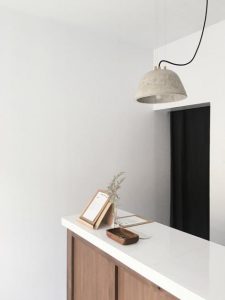A room humidifier can relieve the symptoms associated with air that is too dry.
Low humidity levels are common in the winter.
Heating the house makes the air even drier.
Low humidity levels are a year round problem in dry climates.
Dry air robs the skin and hair of moisture.
This causes dry, itchy skin and is a bigger problem for people with dry skin.
The skin becomes scaly looking and rough to the touch.
People with sensitive skin or eczema have the most problem with low humidity levels in winter.
Dry air can cause health problems as well.
Your nasal passages and throat to become dry.
Most people find this most noticeable in the morning.
If your sore throat gets better during the day, only to return in the early morning, dry air is most likely the cause.
Adding humidity to the room can help relieve your symptoms and help you get a better night’s sleep.
Types of Room Humidifiers
A Steam Humidifier or Vaporizer uses hot water.
This can be hazardous in homes with small children.
The benefit of these is the boiling water kills bacteria and mold spores.
Warm mist humidifiers also use steam, but the air is cooled before being released into the room.
The air can pick up bacteria in the cooling process and isn’t as efficient at killing germs as steam models.
Cool Mist Humidifiers use cold water and release a fine pure mist into the room.
Bacteria is most common in these humidifiers.
Many contain humidifier filters that are meant to trap bacteria and mold.
The best choice is a model with a HEPA filter.
The filters must be changed regularly because they can become clogged with impurities from your water.
To prevent particles from clogging the filter, use distilled water.
Potential Dangers of Humidifiers
Humidifiers can be a breeding ground for bacteria and fungus, if you aren’t careful.
Bacteria inside the unit can be released into the air and breathed into the lungs.
This is especially dangerous for people with asthma and allergies.
The bacteria can make you sick, even if you don’t have one of these conditions.
The standing water is the main source of illness.
Mold spores grow in standing water and are then released into the air when the machine is turned on.
Mineral dust from the minerals in your water is another problem.
This can be seen as white dust inside the machine.
These particles are released in the air and can pose problems, depending on the elements and minerals present in your water supply.
One way to prevent this problem is to use only distilled water.
Maintaining the correct level of humidity in the room will help prevent problems with mold and mildew.
The acceptable range for humidity is between 30 and 50%.
Mold breeds in levels above fifty percent and flourishes at sixty percent moisture.
Invest in a hygrometer to measure and keep track.
A built in humidistat is a great feature and allows you to set the machine with the level you want.
When the room reaches the level, it will shut off automatically.
Cleaning and Maintaining
Proper cleaning can prevent illness caused by humidifiers.
Regular cleaning is essential and instructions are included from the manufacturer to show you the right way to clean your machine.
The water should be changed daily to prevent bacteria and mold spores from developing.
Empty the water after each use, rinse the reservoir with fresh water and dry thoroughly.
Do this every time you turn it off to keep germs away.
Clean the machine according to the manufacturer’s directions.
During times of heavy use, disinfect the machine regularly.
If you use a disinfectant, be sure to rinse it thoroughly until all residue is removed and dry it completely.
This will avoid problems with chemical vapors in the air.
You should disinfect and wash the machine thoroughly at the beginning and end of the season.




